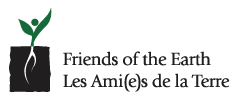
Reducing Pollution Is Critical to Supporting Biodiversity
Pollution is a key driver for biodiversity loss and, rightly, is the focus of Target 7 of the Negotiating Draft of the post-2020 Global Biodiversity Framework.
Negotiators are now dealing with a proposal to reduce nutrients lost to the environment [by at least half] and pesticides [by at least two-thirds]. These “square brackets” show that the levels are under debate by delegates to the Nature COP. It is essential to keep these reduction levels so that damage to biodiversity can be halted – an immediate goal which can be followed by restoration and preservation. In order to measure progress in reduction there must be clear targets.
We need an important addition to the current text. It does not address highly hazardous pesticides*(HHPs) which are a relatively small number of pesticides that cause disproportionate harm to the environment and human health, including severe environmental hazards, high acute and chronic toxicity. Phasing out the use of HHPs to zero is necessary and consistent with developments in other international fora addressing chemicals and pesticides.
We propose that Target 7 be amended as follows (additions in bold):
Reduce pollution from all sources to levels that are not harmful to biodiversity and ecosystem functions and human health, including by reducing nutrients lost to the environment by at least half, and pesticides by at least two thirds, including phasing out Highly Hazardous Pesticides in agriculture by 2030, and eliminating the discharge of plastic waste.
Targets and schedules are key to mobilizing change. We know 2030 is the schedule but the targets need to be clear. The proposed indicator ‘pesticide use per area of cropland’ must be changed to include measures of toxicity or pesticide load as well as volume/weight, treatment area and type of pesticide, as these all have a bearing on the impact on biodiversity. None of these measures alone are sufficient, but should be used in combination.
While the full life cycle of plastic is the focus of negotiation for a new global treaty on plastic waste, it is important to recognize plastic wastes damage to biodiversity at the Nature COP. Negotiators should be using “zero” as the target number for phasing out plastic waste as well as phasing out Highly Hazardous Pesticides.
Canada, which is committed to using Gender-based analysis for its policies and plans, should be supporting an assessment of Gender-differentiated impacts with indicators for monitoring.
*Identifying HHPs
The 2021 updated list of HHPs is available at http://pan-international.org/wp-content/uploads/PAN_HHP_List.pdf. The list, compiled by Pesticide Action Network, is based on classifications by recognised authorities and synthesizes information from WHO, US EPA, the EU Commission and the Pesticide Property Database.
Read Friends of the Earth’s new poll (or quick view infographic) on what young Canadians think about agriculture and pesticides.




